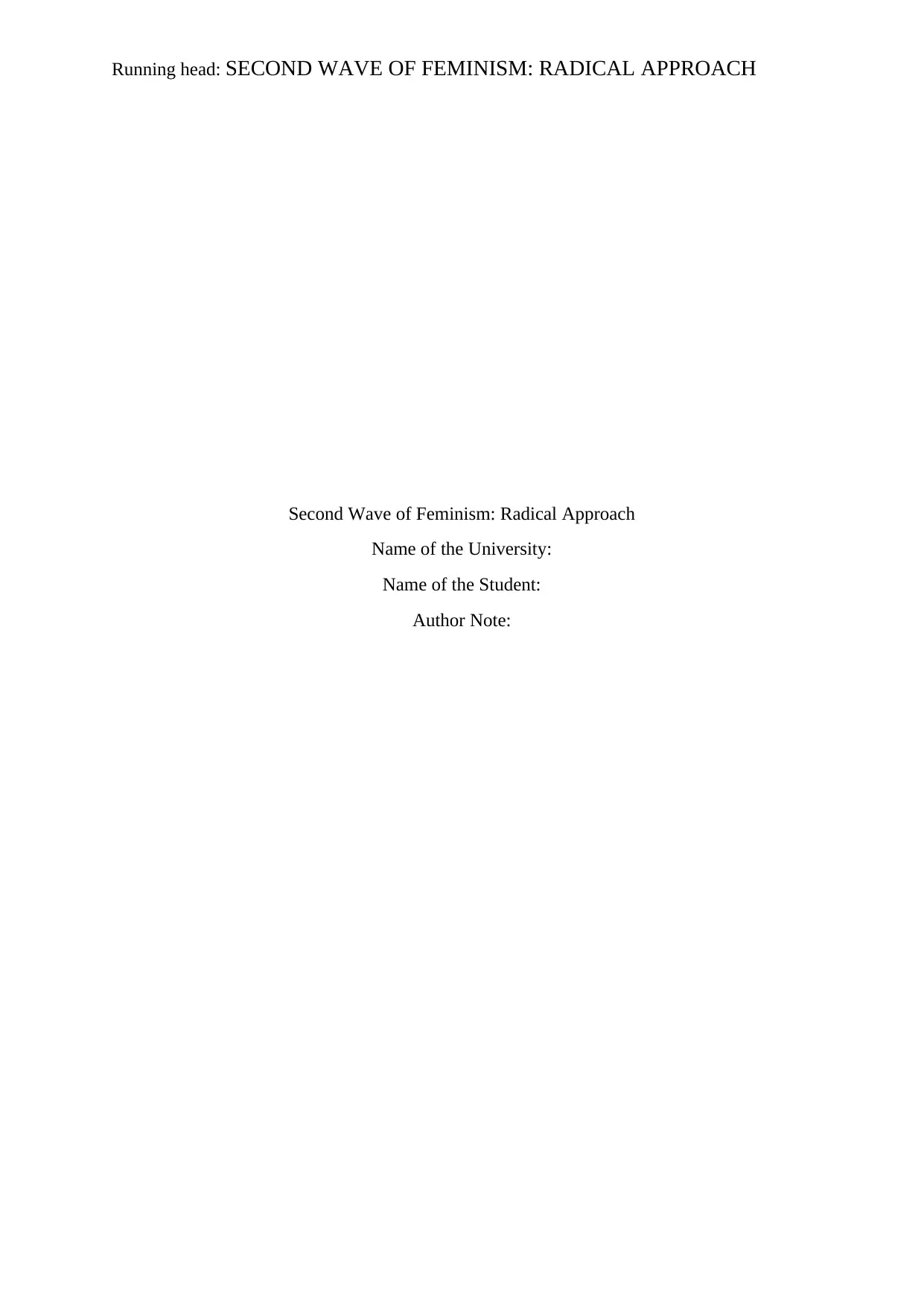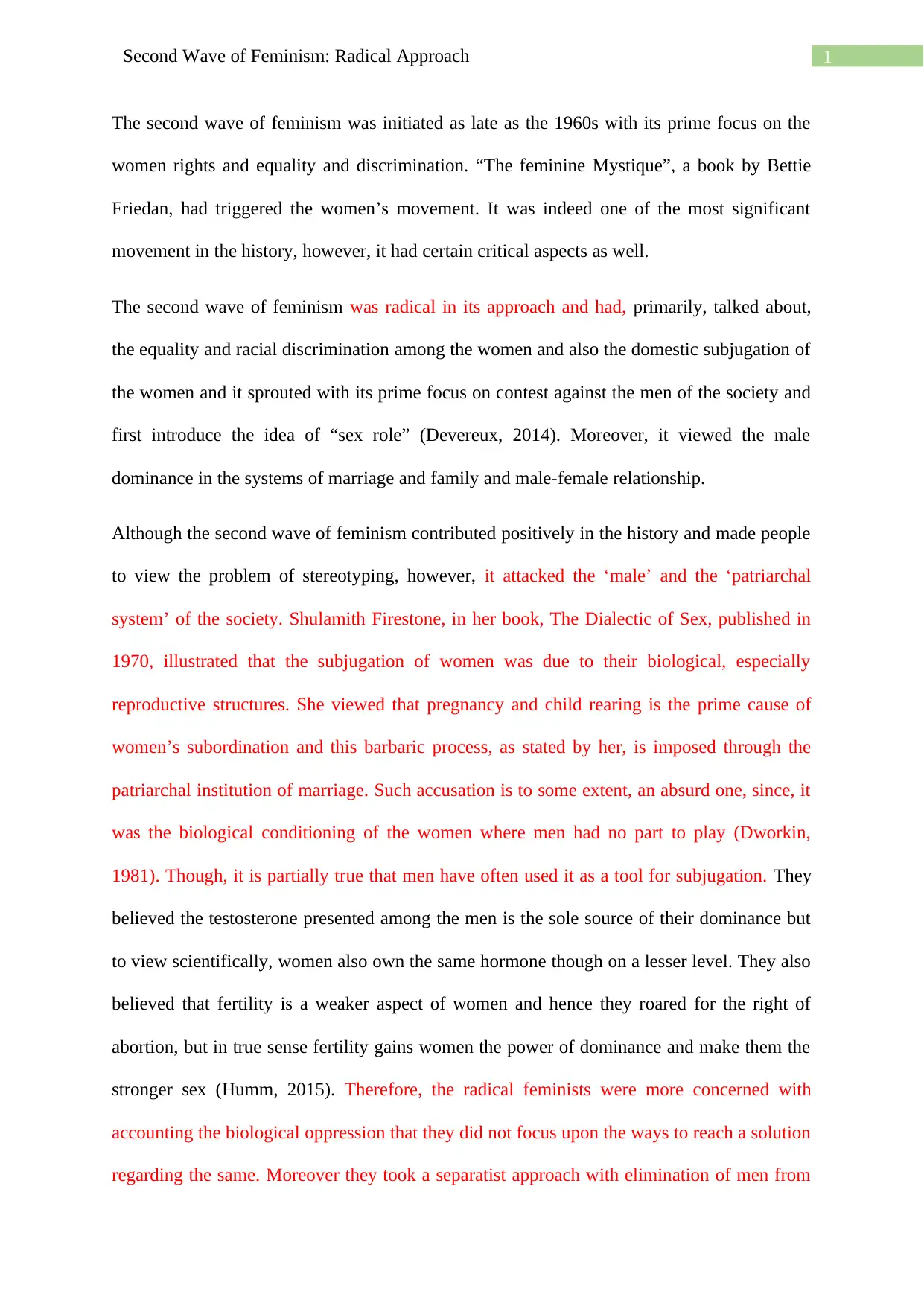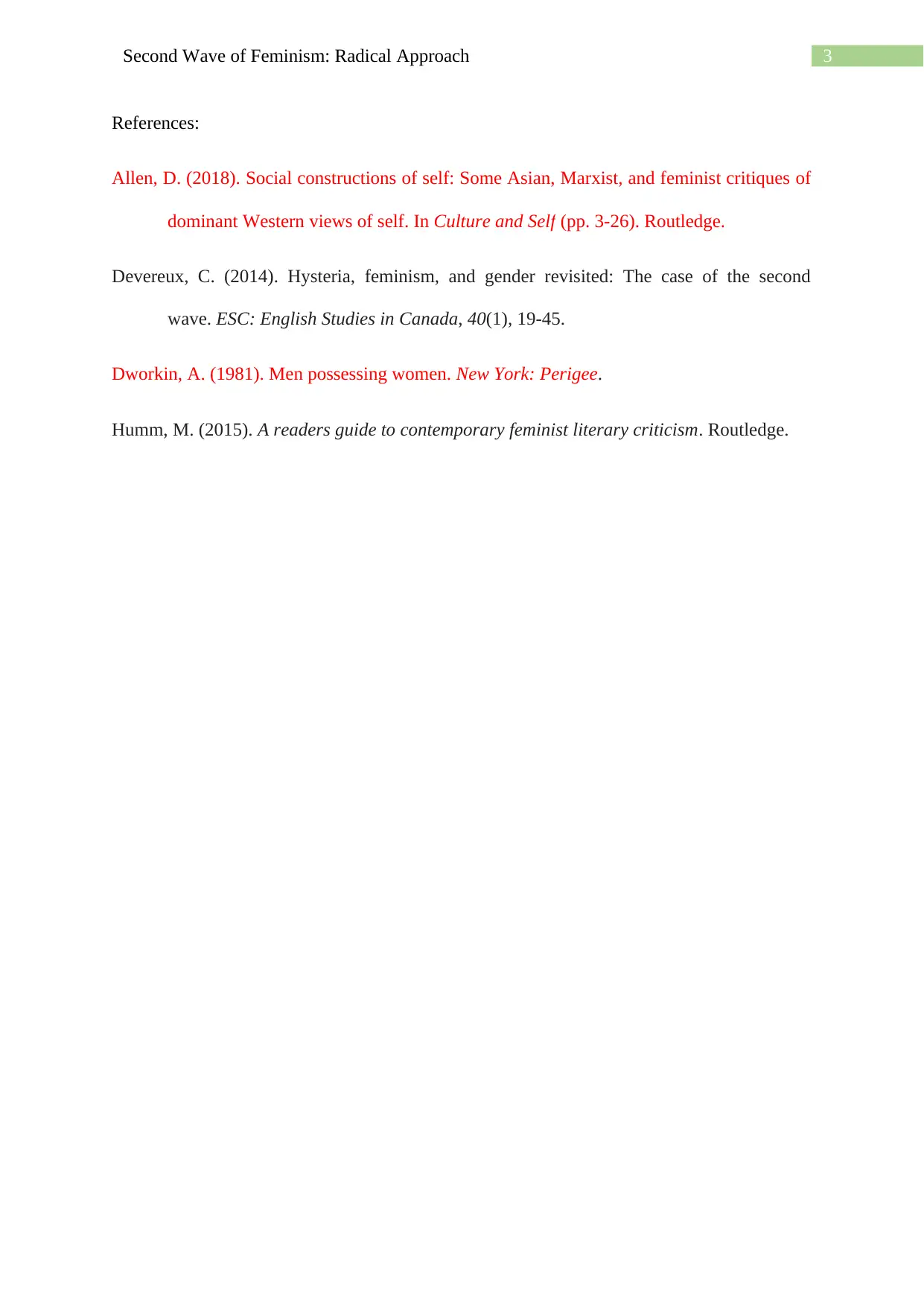A Critical Examination of the Radical Approach in Second Wave Feminism
VerifiedAdded on 2023/01/13
|4
|685
|63
Essay
AI Summary
This essay critically examines the radical approach of the second wave of feminism, focusing on its key tenets and historical context. The essay begins by introducing the second wave of feminism and its primary focus on women's rights, equality, and the fight against discrimination, sparked by Betty Friedan's "The Feminine Mystique." It highlights the radical approach's emphasis on equality, racial discrimination, domestic subjugation, and the critique of male dominance in marriage, family, and societal systems. Drawing on Shulamith Firestone's work in "The Dialectic of Sex," the essay explores the radical feminist view that women's oppression stems from their biology, particularly reproductive structures, and the patriarchal institutions that reinforce this. It then discusses the separatist approach and the focus on biological oppression, along with its drawbacks, such as the persistence of the issues it addressed and the rise of lesbian relationships. The essay concludes by acknowledging the significant impact of the second wave of feminism despite its limitations.
1 out of 4











![[object Object]](/_next/static/media/star-bottom.7253800d.svg)